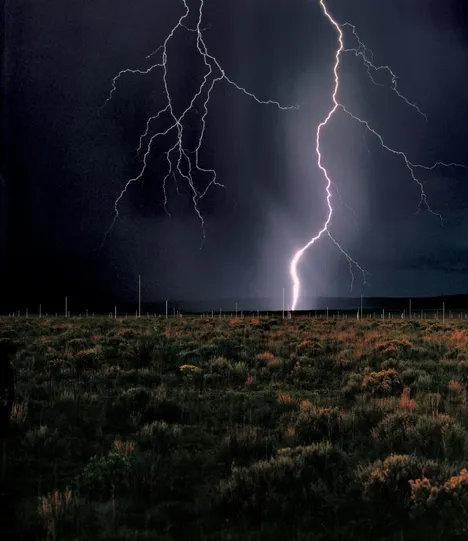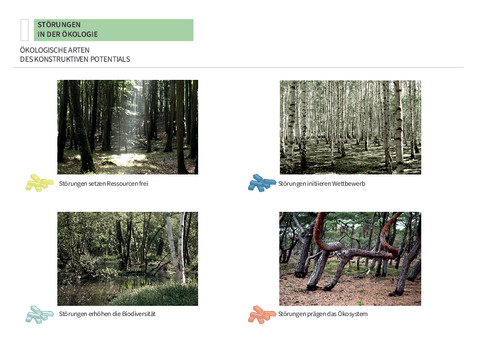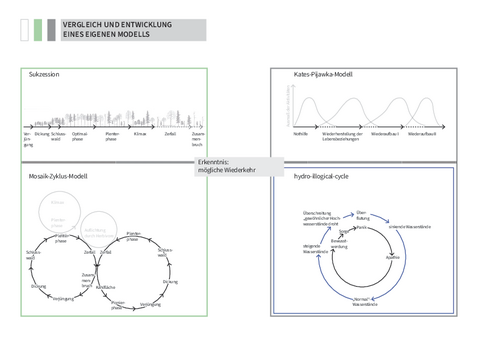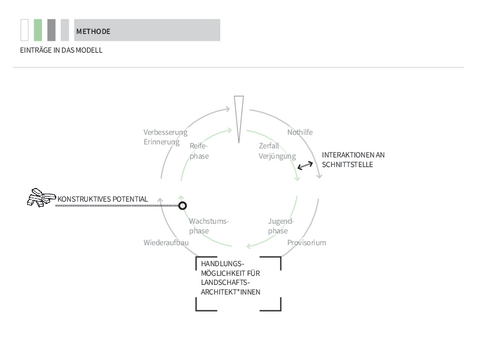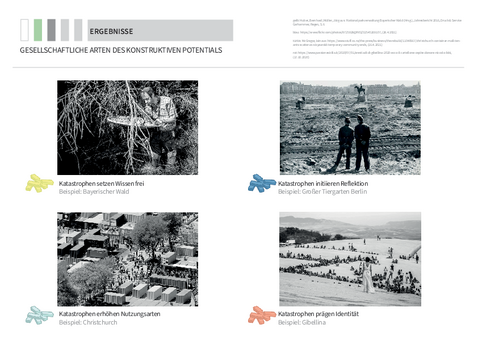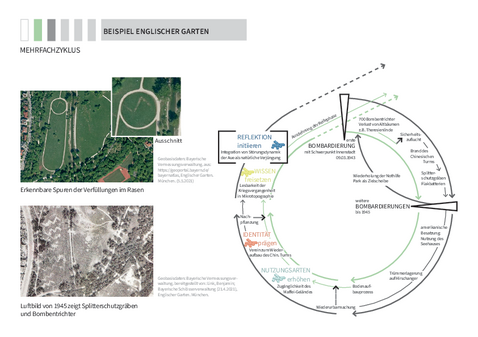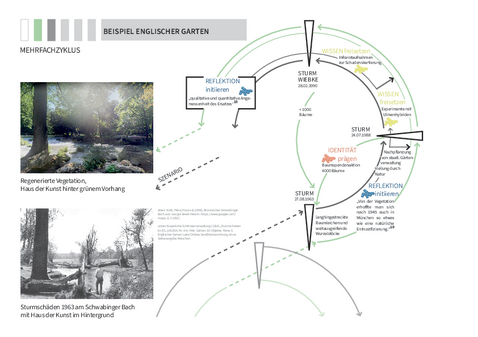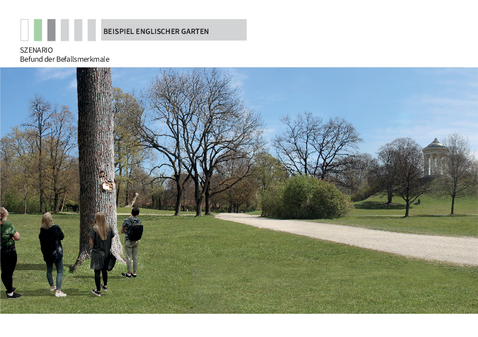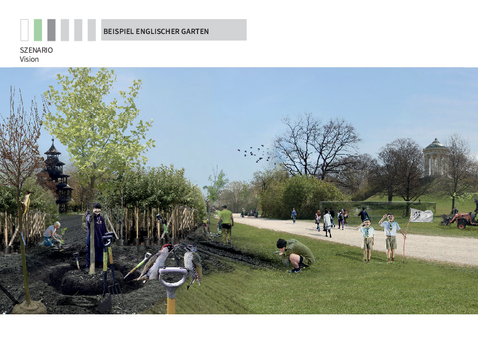Katastrophen Gestalten - Wie Zerstörerische Ereignisse uns Freiraum neu denken lassen
Masterthesis by Britta Bunz
This master thesis explores the constructive potentials of destructive events. The terms „disturbance“ and „disaster“ express the different ways of dealing with destructive events in ecology and society. For uncultivated open space, ecology already recognized the constructive potentials - ressources are released, competition is initiated, biodiversity is increased, and the ecosystem is shaped. Society has yet to gain this recognition for the cultivated open space it considers. The paper attempts to identify commonalities. A specially developed model allows the interface of ecology and society to appear. It has the form of two cycles inscribed in each other. Nine examples of catastrophic events are analyzed using this model. The responses to several earthquakes and storms, as well as a fire and a bombing, are collected. Clustering these individual responses yields four types of constructive potential on the societal side - a „disaster“ can release knowledge, initiate reflection, increase types of use, and shape identity. The constructive potential is shown for each example by two visualizations. The example of the English Garden in Munich illustrates that additional cycles can follow, triggered by further destructive events. A future scenario projects a vision for an imagined event. The before-after comparison underlines the finding that destructive events can be an opportunity for the design of the open space. The dichotomy of open space and thus the dichotomous approach to destructive events becomes obsolete in light of the numerous parallels.
